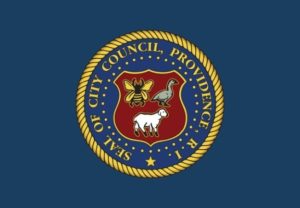Colleges and universities are figuring out how to move forward in the wake of last month’s Supreme Court decision to end affirmative action. One Minnesota-based organization says private-sector scholarships can play a big role in closing racial gaps in higher education.
Mike Nylund, CEO of Scholarship America, joined All Things Considered on Tuesday to talk about the decision and his work.
Hear the conversation using the audio player above, or read a transcript of it below. Both have been lightly edited for clarity and length.
What did you think the ruling would mean for organizations like yours that provide financial support to students?
What we see happening is that their affirmative action decision is likely going to translate over into the scholarship space — we’re seeing signs of that already. So you know, if you saw what happened in Missouri, they’ve made an announcement that the state institutions will not be allowed to factor race into their private scholarship decisions.
Grow the Future of Public Media
MPR News is supported by Members. Gifts from individuals power everything you find here. Make a gift of any amount today to become a Member!
And we think that’s going to continue in other states, and or you will see more risk adverse institutions on their own make this decision. I think all leading indicators are that the affirmative action decision around admissions is going to translate into how institutions create and disperse their scholarships.
What do we know about the role that that scholarship providers have played historically, in diversifying college campuses?
There’s somewhere between $7.5 billion to $8 billion of scholarships going to students through institutions, and through nonprofits like Scholarship America. Unfortunately, though, when we look at how those have been applied, historically, what we’re finding is 10 percent or less, really are going to students of color have in need of financial means,
Which leaves 90 percent of it, where is that going? Historically, or traditionally, how has it worked?
I would say, the vast majority of scholarships are created from a merit-based perspective. So what that looks like is if you’re valedictorian, and in a lot of extracurricular activities, chances are higher and you get a scholarship.
Our work really has been with the people who are trying to really do good work with scholarships to understand the importance of shifting to a need-based model. We did some research with MIT and what that research showed that if you think of a scholarship as wanting to get a return on investment on your community, if you’re delivering those scholarships to those students, the merit-based students, you’re not going to get a return on your investment.
What the MIT research also indicated is, if you can get those scholarship dollars in your community to low income, students of color, you know, Pell-eligible students, you will see return in your community with that scholarship investment.
Give us an idea of how of how it could change or what do you think needs to change to make that happen on a more regular basis.
The nonprofit community has been doing this for a long time and has a really, really good track record. I think what the philanthropic community has to do then is align their dollars to the nonprofit community because we will be able to use race as a way to deliver scholarships to students.
And here in Minnesota, there’s a strong history of corporate giving of nonprofits, what’s your message to them and others who might want to help with this work?
Look for those organizations that have proven results, and and also look for organizations that can continue to deliver the scholarship dollars to those students with the most need. One of the commitments we’ve made as an organization is to deliver the majority of our funds to students of color that will benefit the most so they don’t have to take out student loans. So over the next two to three years, we’re gonna be working to shift all of our scholarship dollars, or the majority of them to get to those students.
The Supreme Court also recently ruled against President Biden’s plans to forgive student debt. The President is working on other mechanisms to still do that, but how might that play into everything too?
What we try to do is to get those dollars to the students in the front end, so they don’t have to take out those huge amounts of student loans to begin with. If you look at Black students in particular, they are graduating a lower rate and they have a higher likelihood of leaving that experience with student loan debt. The nonprofits and organizations like ours are really trying to find those students ahead of time so we can get scholarship dollars to them in the beginning, that removes the need for them to take out student loans.
As we think of how it relates to affirmative action, it’s a call to action for us to step up and think differently about getting the majority of those scholarships dollars to those students that would benefit the most from them.




